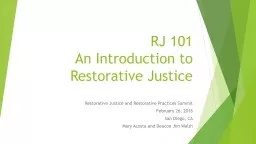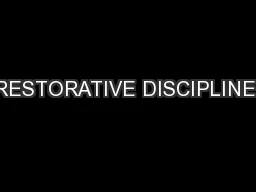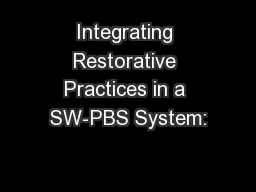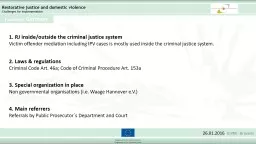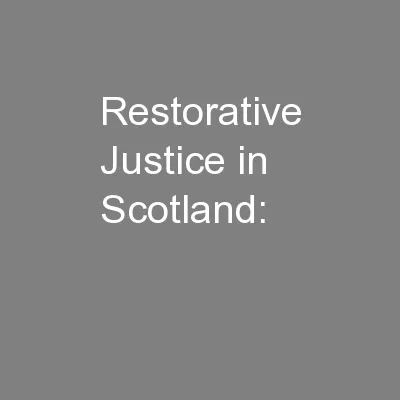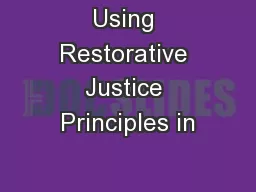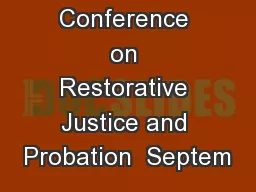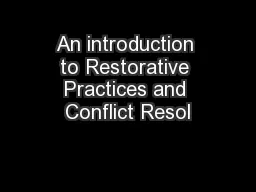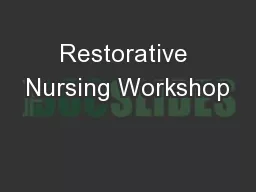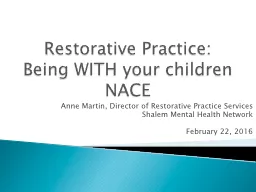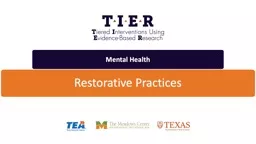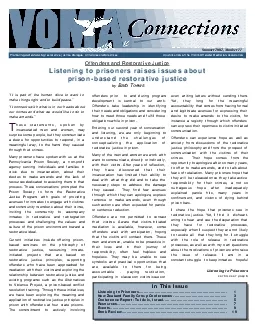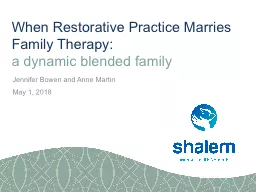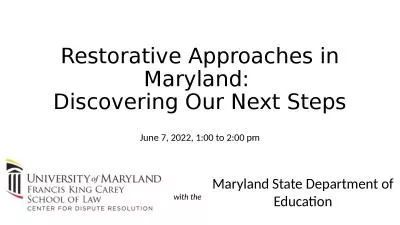PPT-RJ 101 An Introduction to Restorative Justice
Author : stefany-barnette | Published Date : 2018-10-25
Restorative Justice and Restorative Practices Summit February 26 2016 San Diego CA Mary Acosta and Deacon Jim Walsh What is Restorative Justice anyway Restorative
Presentation Embed Code
Download Presentation
Download Presentation The PPT/PDF document "RJ 101 An Introduction to Restorative J..." is the property of its rightful owner. Permission is granted to download and print the materials on this website for personal, non-commercial use only, and to display it on your personal computer provided you do not modify the materials and that you retain all copyright notices contained in the materials. By downloading content from our website, you accept the terms of this agreement.
RJ 101 An Introduction to Restorative Justice: Transcript
Download Rules Of Document
"RJ 101 An Introduction to Restorative Justice"The content belongs to its owner. You may download and print it for personal use, without modification, and keep all copyright notices. By downloading, you agree to these terms.
Related Documents

